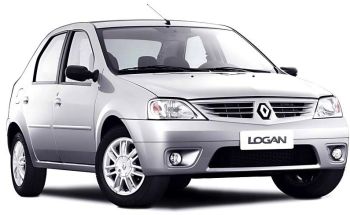The Indian automobile sector has seen a variety of joint ventures, some of which have been successful and others that have failed. In 2005, Mahindra and Renault entered into a short-term partnership. Mahindra Logan was the first product of this joint venture, which began in 2007. What went into the development of the Mahindra Logan concept? Was it a resounding triumph or a flop? Let’s go into the past for any and all information we can discover!
Table of Contents
The Mahindra Logan Story
The Renault-Mahindra joint venture and the creation of Logan

Since 1945, Mahindra & Mahindra Automotive has been amongst the leaders in the industry. Mahindra has a global reputation for everything from farm equipment to passenger automobiles. In the automobile sector, Renault, a French carmaker, is recognized for design and technical innovation. Renault has had a difficult time in India. Renault engineers chose to launch a tough automobile in Europe for less than €5,000. In the European market, it was an instant hit. Mahindra wants to seize the chance and bring it to India. As a result, the JV was formed. In 2007, a production factory was established, and the Mahindra Logan began to roll out.
Download GaragePro App for Android
What were the plans with Mahindra Logan?
The Mahindra Logan is one of the few entry-level sedans available in India. The JV has established a monthly sales goal of 2500 units. As the Christmas season approached, Mahindra and Renault, which had been launched in April 2007, received a lot of excellent feedback. Was Mahindra Logan able to ride the high-volume sales wave? We’ll find out once we look through the car’s specifications and features.
USPs of the Mahindra Logan
No one else can compare to you in terms of space!
The business chose to retain the automobile at a height of nearly 4,000mm. This freed up space both inside the cabin and in the boot. Legroom, headroom, and shoulder space were all adequate. The back seat could easily accommodate three persons. The Logan boasted the segment’s biggest back seat.
Safety at a time when no one else seemed to care!
For a long period, Indian automobiles were not safe, as evidenced by history. Logan, on the other hand, was supposed to be safer than the competition. It included a driver-side airbag, ABS with EBD, 3-point seatbelts, a collapsible steering wheel, and other features that made it a safe pick.
Everyone will be at ease!
The occupants were made more comfortable by the fabric upholstery with velour material. Three headrests were installed in the back to improve the safety and comfort of the rear passengers. For that extra touch, it also included an optional armrest.
Yes, absolutely. Considering the price tag of 4.66 lakhs, all of the amenities and comfort were excellent. However, a number of circumstances contributed to the car’s as well as the JV’s collapse. In contrast to the aim of 2500 units each month, the firm only managed to sell 500 units every month. Even the holiday season couldn’t alter the tide. Logan’s sales had plummeted to an all-time low by 2010, resulting in a cumulative loss of over 580 crores and the JV’s dissolution. What went wrong, despite coming from two of the most well-known car brands?
Download GaragePro App for iOS
What went wrong with Logan
The Mahindra-Renault car is in reverse gear due to pricing issues and inadequate localization. At the India Economic Summit, Renault SA CEO Carlos Ghosn spoke about the need for “patience and dedication” to get Logan back on track in India. Based on the sedan’s performance in India thus far, Renault and its Indian joint venture partner, Mahindra & Mahindra (M&M), will require significantly more. When it first opened its doors in April 2007, the joint venture aimed to sell 30,000 automobiles per year, or 2,500 per month. Actual monthly sales have been a sixth of that, a little under 500 automobiles. That number decreased to 401 in October of this year, down 68 percent from a year ago.
Logan’s inability to play the price game was due to the car’s localization content (the proportion of parts obtained locally), which is 50%, being significantly lower than the competition, driving up the ultimate cost of the vehicle.
Furthermore, because the engines were imported from France, the joint venture was forced to price the car higher than the market leaders, Maruti Suzuki and Tata Motors.

